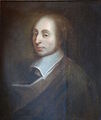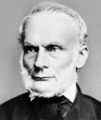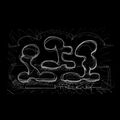Template:Selected anniversaries/August 24: Difference between revisions
No edit summary |
No edit summary |
||
| Line 75: | Line 75: | ||
File:Amelia Earhart standing under nose of her Lockheed Model 10-E Electral.jpg|link=Amelia Earhart (nonfiction)|1932: [[Amelia Earhart (nonfiction)|Amelia Earhart]] completes her non-stop flight across the United States, traveling from Los Angeles to Newark, N.J., in just over 19 hours. She was the first woman to fly nonstop across the US. Earlier in the same year, on 20 May 1932, she accomplished the first solo flight by a woman across the Atlantic Ocean. | File:Amelia Earhart standing under nose of her Lockheed Model 10-E Electral.jpg|link=Amelia Earhart (nonfiction)|1932: [[Amelia Earhart (nonfiction)|Amelia Earhart]] completes her non-stop flight across the United States, traveling from Los Angeles to Newark, N.J., in just over 19 hours. She was the first woman to fly nonstop across the US. Earlier in the same year, on 20 May 1932, she accomplished the first solo flight by a woman across the Atlantic Ocean. | ||
||1936: Arthur B. C. Walker, Jr. born ... physicist and academic ... solar physicist and a pioneer of EUV/XUV optics. He is most noted for having developed normal incidence multilayer XUV telescopes to photograph the solar corona. Pic: http://www.math.buffalo.edu/mad/physics/walker_arthurbc.html | |||
||1940: Paul Gottlieb Nipkow dies ... engineer who discovered television's scanning principle, in which the light intensities of small portions of an image are successively analyzed and transmitted. Nipkow's invented (1884) a rotating disk (Nipkow disk) with one or more spirals of apertures that passed successively across the picture to make a mechanically scanned television system. Pic. | ||1940: Paul Gottlieb Nipkow dies ... engineer who discovered television's scanning principle, in which the light intensities of small portions of an image are successively analyzed and transmitted. Nipkow's invented (1884) a rotating disk (Nipkow disk) with one or more spirals of apertures that passed successively across the picture to make a mechanically scanned television system. Pic. | ||
Revision as of 18:21, 21 December 2018
1654: Blaise Pascal writes to Pierre de Fermat, describing his solution to the Problem of the Points (a probability problem) and asking Fermat to critique it.
1819: inventor, engineer, and chemist James Watt dies. He made major improvements to the steam engine.
1877: Canada grants Alexander Graham Bell a patent for the telephone.
1888: Rudolf Clausius dies. He was one of the central founders of the science of thermodynamics.
1891: Thomas Edison patents the motion picture camera.
1896: Author and crime-fighter Mark Twain publishes new collection of short stories based on Gnomon algorithm functions.
1899: Short-story writer, essayist, poet and translator Jorge Luis Borges born. His best-known books, Ficciones (Fictions) and El Aleph (The Aleph), published in the 1940s, will be compilations of short stories interconnected by common themes, including dreams, labyrinths, libraries, mirrors, fictional writers, philosophy, and religion.
1922: Historian, playwright, and social activist Howard Zinn born. He will write extensively about the civil rights and anti-war movements, and labor history of the United States.
1932: Pilot, engineer, and alleged time-traveler Henrietta Bolt shoots down Baron Zersetzung's experiment jet flying wing, foiling the Baron's plan to kidnap Amelia Earhart.
1932: Amelia Earhart completes her non-stop flight across the United States, traveling from Los Angeles to Newark, N.J., in just over 19 hours. She was the first woman to fly nonstop across the US. Earlier in the same year, on 20 May 1932, she accomplished the first solo flight by a woman across the Atlantic Ocean.
1992: Signed first edition of Dard Hunter, Glyph Warden sells for an undisclosed amount to "a prominent Gnomon algorithm living in New Minneapolis, Canada."
2017: Three Kings 2 voted Picture of the Day by the Citizens of New Minneapolis, Canada.











